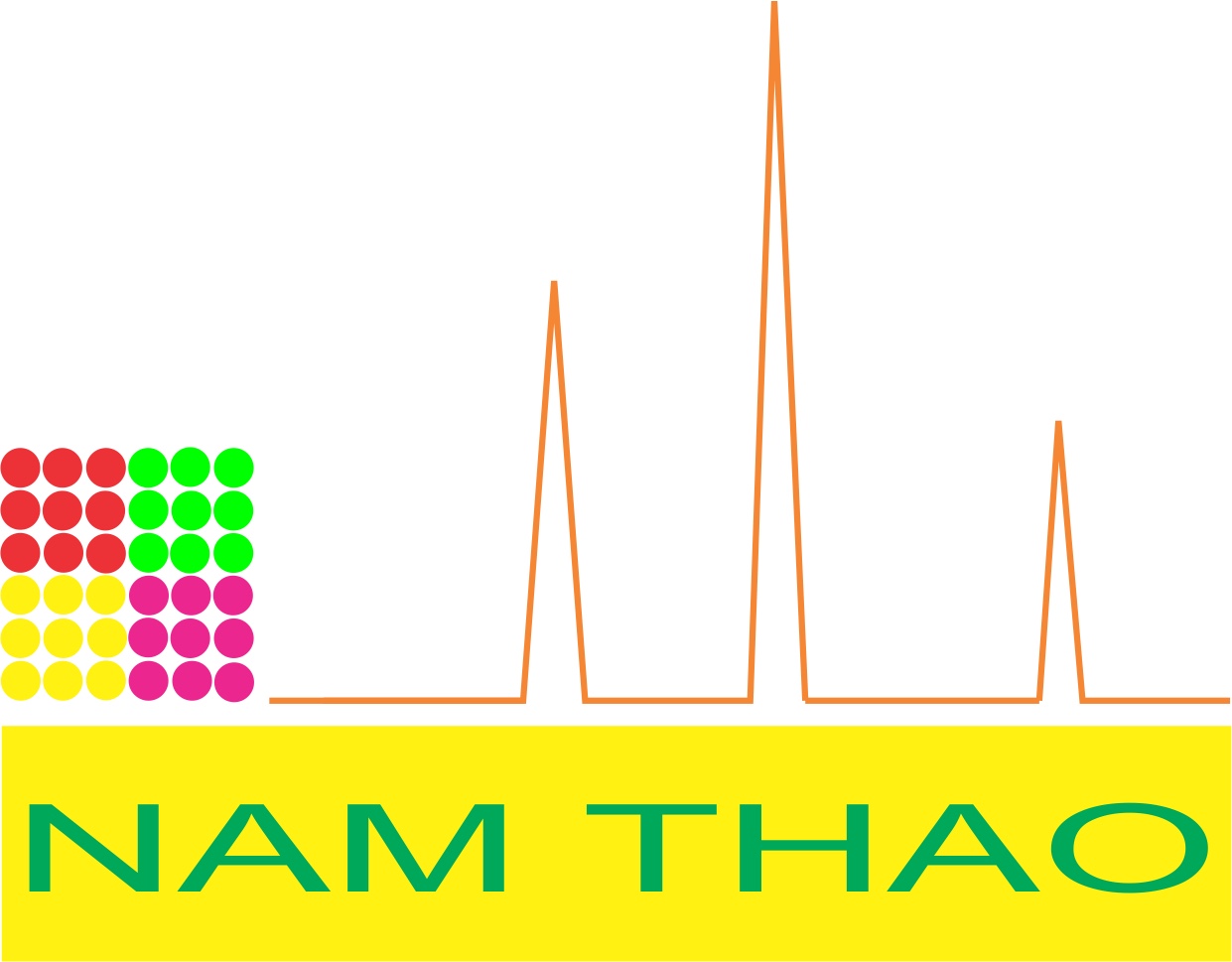The Robotic System for Fully Automated Mycotoxin Analysis
FREESTYLE ThermELUTE™ allows complete automation of sample preparation and analysis of Aflatoxins B1, B2, G1, G2 and M1 as well as Ochratoxin A and Zearalenone in all regulated matrices.
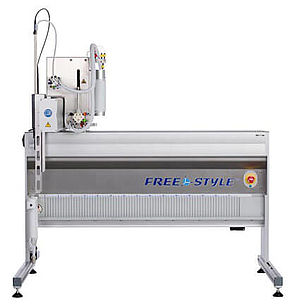
For this purpose the FREESTYLE BASIC is equipped with the SPE module and the ThermELUTE™ module and is connected to any HPLC device. The result is a comprehensive automation from raw extract to the finished chromatogram without any manual working step, but with convincing advantages:
- High sample throughput of up to 500 samples / week
- Sample processing day and night and even at weekends
- Remarkable sensitivity in the lower ppt range
- Excellent recovery rates
- Reproducible results
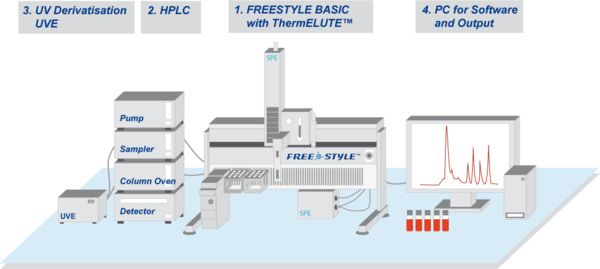
1. FREESTYLE BASIC with ThermELUTE™ module for sample preparation
2. HPLC for analysis
3. UVE for the derivatisation of aflatoxins B1 and G1
4. PC for software control and output of the chromatograms
Process steps of sample preparation with FREESTYLE
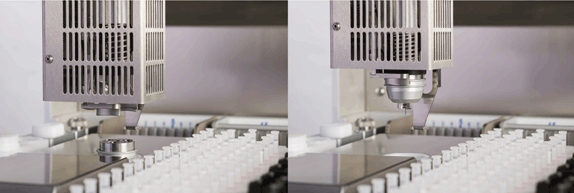
Gripper takes the adapter.

Gripper with adapter takes the SMART column

Gripper with adapter injects SMART column into the ThermELUTE ™ module
Unique: thermal denaturation
Using the FREESTYLE robotic system, the extracted, diluted and filtered sample is loaded onto the high-performance SMART column. After washing, the column is heated, which breaks the bond between toxin and antibody. The toxins, in form of a large-volume, aqueous eluate, are directly eluted into the HPLC sample loop via partial filling.
Via an interface, the sample will now be released, taken over by the HPLC then derivatised (aflatoxin B1, G1) and analysed. In parallel, the next sample is already being prepared by the FREESTYLE system
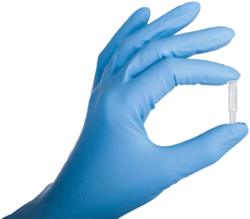 |
Small, smaller, SMARTThe system achieves the high sample throughput by using the only 3.5 cm sized SMART immunoaffinity columns. Through miniaturization of the overall process, not only the processing time of the sample is dramatically reduced, but also the required amounts of sample and solvent. Each sample is processed with a SMART column, which grants top performance for each sample and reliably prevents cross-contamination. |
Due to the parallelisation of the process steps for sample preparation and analysis an enormous increase of sample throughput of up to 500 samples per week can be achieved.
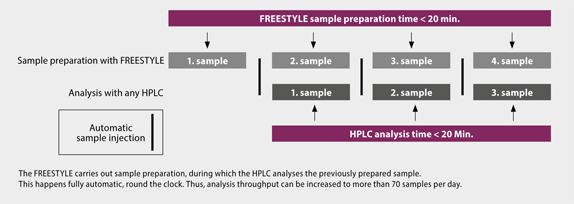
ppt instead of ppb
The user has the certainty of being able to always measure below the European limits without special measures and further processing steps, even for baby food.
High sensitivity due to:
- Injection of the entire eluate
- Adjustment to the HPLC mobile phase is omitted
- No losses through evaporation or adsorption effects
- No losses through manual intermediate steps
Recoveries (%) of aflatoxins B1, B2, G1, G2, M1 and Ochratoxin A;
Samples processed with FREESTYLE ThermELUTE™
| Matrix | B1 | B2 | G1 | G2 | M1 | OTA |
|---|---|---|---|---|---|---|
| Standard* | 100 | 100 | 100 | 100 | 100 | 100 |
| Raisins 10 ppb** | 94 | 96 | 94 | 91 | – | – |
| Pistachios 10 ppb** | 98 | 94 | 95 | 93 | – | – |
| Milk 0,02 ppb** | – | – | – | – | 99 | – |
| Roasted coffee 5 ppb** | – | – | – | – | – | 90 |
| Paprika noble sweet 10 ppb** | – | – | – | – | – | 84 |
| White wine 0,8 ppb** | – | – | – | – | – | 97 |
* Standard is set = 100 %
** corrected with on-spiked sample
Results
There is only one method per toxin, which is used for all regulated matrices. The method selection is thus considerably simplified.
The following chromatogram of a parsley sample shows the sensitivity of results as well as their reproducibility, even for strong regulated measurement ranges, such as baby food.
You will find further chromatograms in a summary of different matrices with the focus on reproducibility of the results and the absence of cross-contamination.
10 g parsley were extracted with 80/20 (100 mL) and 50 mL n-hexane and 1 g sodium chloride. The raw extract was filtrated and 2 mL were diluted with 12 mL PBS, containing 8 % Tween 20. 2.8 mL (represent 0.04 g matrix equivalent) was processed.
Prior to this the matrix was spiked with 0.25 ppb total aflatoxin (B1 0.1 ppb).
Five consecutive chromatograms have been tested for the chromatographical comparability.
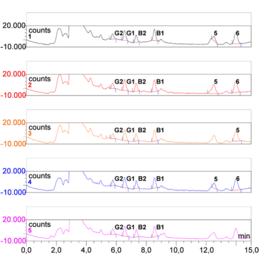
Parsley (0.04 g), spiked with 0.25 ppb (µg/Kg) total aflatoxin |
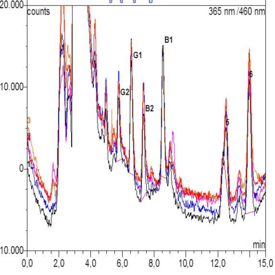
Overlay of chromatograms shows reproducibility of results |
